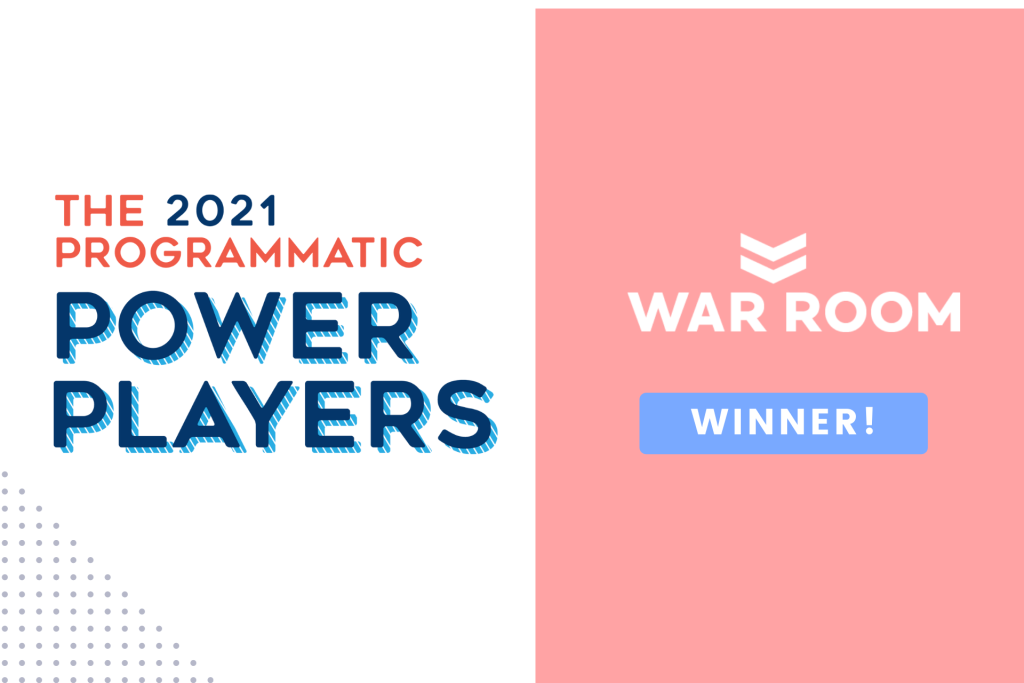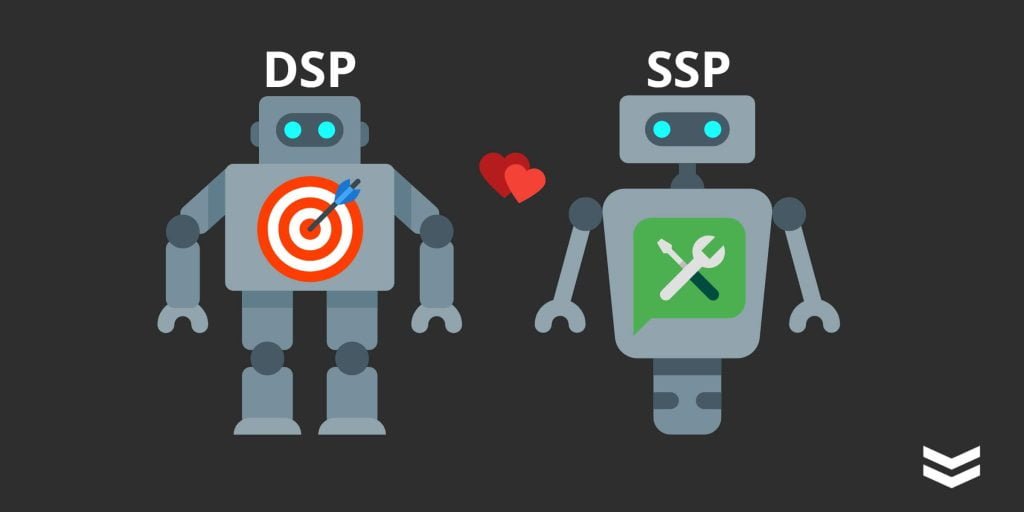8 Digital Marketing Tips to Drive Holiday Sales in 2021

Wow, did 2021 fly by or what! The holiday season is coming–that means Black Friday, Cyber Monday, Boxing Day etc. are all lined up for the end of this year, and consumers are ready to shop. A survey conducted recently showed that 55% of consumers plan to shop for the holidays BEFORE Thanksgiving! So by now, you should be building out your holiday digital advertising strategy to reach them in time. Some of our previous blogs covered practical tips on creating promotions and enhancing shopper experiences: Holiday Marketing Tips for 2020 Post-Pandemic Digital Marketing Tips for Success In this blog, we will focus on ways to spruce up your holiday advertising! We’ll share the same data insights into consumer behavior and eight tips to capture your audiences’ hearts and drive more sales. Read on! Digital Tips & Insights to Drive Holiday Sales in 2021 Jungle Scout presented an in-depth look at holiday shopper trends. They identified, in order, where early holiday shoppers will look for products online: Amazon Google, Bing and other search engines (Learn more: Microsoft Bing Ads vs. Google Ads) Walmart Facebook Youtube Instagram Brand websites TikTok Other social channel Some other takeaways are: 1 in 4 people are planning to spend more on Christmas this year (compared to 2020) 60% of people say they would consider purchasing a product that is recommended to them by brand or influencer content (on TikTok, Youtube, or Instagram) Ensure Your Website is Optimized for Mobile The purpose of a website is to educate our audience about a company’s brand and its products and services and drive sales. It’s your company’s best, around-the-clock salesperson! Why should you optimize your website for mobile? Well, take a look at these astonishing statistics about mobile eCommerce from TechJury: By the end of 2021, mobile eCommerce sales will hit $3.56 trillion 67% of all eCommerce is done through mobile By the end of 2021, 73% of all eCommerce will be mobile! 79% of smartphone users have made a purchase on their mobile device Mobile optimization is a no-brainer for eCommerce or B2C companies. But the same principle still applies to any company trying to increase brand awareness or generate more leads. Your website is sometimes the first destination after someone clicks on your ad, and first impressions are everything! To drive more online sales, mobile optimization has to be part of your website strategy! Note that some elements on a page may require different dimensions for tablet and mobile. Be sure to create a seamless user experience, no matter how the user is accessing your site. Create a Specific Promotion and Stick with It! Whether it’s Black Friday, Cyber Monday, or closer to the actual holidays, you’re offering some great deals, right? Think about a promotion that offers great value and keep it simple. You could then promote it through multiple channels to maximize Click-Through Rate and conversions. A multi-pronged digital approach is best. If you run seasonal promotions, reflect across all your ad channels. It can amplify your efforts when done right. Imagine a user hearing your audio ad on Spotify that talks about your promo code, “BLACK FRIYAY” and then, later on, sees your retargeting Display Ads that further promote your ads. Having more touchpoints across different media will keep your brand top of mind. Build a Dedicated Holiday Landing Page Whether it’s for Black Friday or Boxing Day, you might have specific products you want to promote. Why not build a dedicated landing page for it? Take some time to build out content that highlights the benefits and encourages users to convert. If you already have a specific page for your featured items, make that your landing page instead of your homepage! Users won’t need to sift through a lot of content or get distracted. Here are some tips for your landing page: Create a sense of urgency by emphasizing the time-sensitivity of your offer. Ensure your CTA buttons are mobile-optimized so users can interact with them even on a smaller screen. When designing any banners, be mindful of your text size as it should still be readable when switching from desktop to mobile (and vice versa). Minimize the touchpoints from product pages to checking out. The easier, the better. Be sure to showcase your seasonal promotion and have it visible throughout your website. For a detailed breakdown of how you can increase conversions, download our Blueprint to Building a High-Converting Landing Page. Drive Website Traffic with Existing Assets from Social Media A great Instagram hack to drive more traffic is to repurpose a post on Instagram that performed well last holiday season. Now, thanks to programmatic ad tech, you can serve it as a display ad across the entire display network! This means people who don’t follow you on Instagram or haven’t even heard of you can see your awesome post if you choose to target them. This is called Social Display Ads. It saves you time and money because you don’t need to design any new visuals. You’ll get more time to focus on the rest of your holiday marketing efforts, all while knowing you’re showcasing your brand through proven, successful visuals. Not to mention, the Click-Through Rate of Social Display Ads consistently outperforms regular display ads. It’s an excellent option for retargeting. Feel free to learn more about this option in our blog on Social Display Ads. Or, if you’re interested, contact us today to learn more! Have Fun with Your Email Marketing Campaign Get creative! Aside from your holiday promotion being a center star, throw in extra, enjoyable content to spread the holiday cheer. This could be a holiday-themed blog, a carousel of images, or you can get creative and share a seasonal recipe. Take this opportunity to get even more personable than any other time of the year. As an example, we really like what Flippingbook did: they created an interactive flip book that includes their team’s favorite recipes, playlists and to-dos for the Christmas season. Boost In-App Purchases with Pinterest Pinterest is a social media
The Anatomy of Ad Creative

An ad creative is delivered on a webpage, social media, app, or another platform to a targeted audience. These are typically known as display ads, which are used to drive business objectives, such as increasing website traffic or sales. In this blog, we will take a look at the anatomy of an ad and share tips so you can bring your A-game to the ad game. Here are the categories we will breakdown: Size Visual Color Ad Copy Call-To-Action What is an Ad Creative? Ad Creative is defined as the design and content of an advertisement. You don’t need to be a designer or novelist to create an effective ad. Use these best practices below to keep your ad creatives on the right track! Interactive Advertising Bureau (IAB)’s Advertising Creative Guidelines recommend that “ads should be distinguishable from native web content”. It has to be seen as a banner with visuals and text that promote your brand, product, or service. The viewer would know at first sight that if they are enticed and click on your ad, they would be directed away from their current page. Creating ads is about finding a balance between being attention-grabbing, but not obnoxious, offensive, or god-forbid — forgettable! Here is a breakdown of a well-balanced ad: As you can see in the graph, the vital components of an effective ad are: Image of your product or service Ad copy: tagline & value proposition Logo design and/or brand name Call-To-Action Ad creative size Before we dive into ad visuals and design, we need to understand why there are so many ad shapes and sizes. The main reasons are due to: Countless amount of ad networks available Various types of devices (desktop, mobile, tablet etc) Audience reach is an important factor in advertising. This is why as marketers, we need to create ads in a variety of sizes. it guarantees more flexible ad placement across the internet and serves a seamless viewing experience! Create a variety of ad formats. According to Google, the top-performing ad sizes are: 300×250 728×90 160×600 These are the top 3 ad formats according to Google that get the most ad impressions. Ad creative visuals Let’s be honest: human beings are visual creatures. “A picture is worth a thousand words” rings especially true when it comes to your ad imagery.Pictures help people visualize the offered product or service. Whether you’re using popular free stock images or getting a photoshoot done for your ad, here are some pointers: Showcase your product, service, brand, and/or environment clearly Match your image to your ad copy AND landing page — they should all share the same look and feel while conveying your message Avoid gloomy imagery – we encourage using a brighter tone If people are featured in your ad imagery, try to feature models that match the demographic you are targeting If the focus is the view, we recommend using tiny to middle-sized figures to allow the focal point to be the atmosphere If the focus is the activity, use middle to large-sized figures to demonstrate the experience People are naturally attracted to images inside boxes. If you have an ad with a white background, consider outlining your ads with a 1px (minimum) line to frame it If you have a promotion, highlight it in the image with text and keep it concise. Eg. 20% off, 2 days only! Keep the text light in the image. Try to keep it under 20% of the space on the visual To avoid ad fatigue, freshen up your campaigns with new imagery to keep them fresh! Ad creative colors Color has a powerful effect on human emotion and a viewer’s perception of a brand. When color is correctly and consistently, it can create a positive impact and make a lasting impression. You can use color to: Grab people’s attention Define brand identity Associate your product or service with a specific emotion or feeling Imagine a bank with a bright yellow logo or a feminine hygiene ad that had a brown-colored background. It feels a little “off” as it doesn’t align with our expectations for specific products or brands. Why is this? Aside from social conditioning, a lot of these color-based expectations are rooted in our biological programming! For example, red is often used by food chains or brands because bright red is like fresh meat or fruit that’s ripe and ready for us to eat. Here are the popular colors, what sense they’re typically associated with, and common uses: Red Energetic and passionate Common uses: food products or brands, clearance sales Blue Authoritative and trustworthy Common uses: businesses and financial institutions like banks Yellow Optimistic and youthful Common uses: window shopping signs Green Calm and mature Common uses: eco-friendly brands, wellness spas, and products Orange Bold and assertive Common uses: Call-To-Actions like Buy or Subscribe Purple Sensual and mysterious Common uses: luxury products, sexual wellness products Pink Romantic and often associated with femininity Common uses: pastries, branding for feminine products or services like beauty, hygiene, etc Black Sleek and luxurious Common uses: high-end, luxury items such as cars, watches; used as a contrasting background to make the focal point stand out A survey was conducted, and results show the general public’s favorite and least liked colors: Favorite colors: Blue Green Purple Red The least liked colors: Blue Green Purple Red (Don’t let this sway you–it’s just nice to know!) This is a Color Wheel and how colors relate to one another. We recommend using a color contrast. Why? It’s visually more interesting. It can get viewers to focus their attention on specific elements of your ad. This could be a particular keyword, icon, or Call-To-Action button. Complementary and Split Complementary uses colors that are found across from each other on the color wheel. Here is an example of how color contrast can work well visually: The bright-colored “25% off” really pops because it’s a warmer color sitting on top of a muted background. Ad creative copy Just like
Marketing Tips For Singles’ Day

Shop til you drop? Now, it’s more like: online shop ’til ya’ keyboard flop! Our article, “How Amazon is Dominating eCommerce,” mentioned that Amazon pushed Prime Day to October 2020 because of the COVID-19 pandemic. In November, there are typically huge sales, both in-store and online. Yes, Black Friday and Cyber Monday deals are always when people like to shop till they drop. However, a new emerging “day” has come, and it’s a force to be reckoned with! Say hello to Singles’ Day, November 11th. This day originated from China; the main goal is to bring attention to and celebrate those whose relationship status is single, which has now evolved into an epic sales event. In this blog, we will explain how Singles’ Day is single-handedly dominating global online sales. In this article, we will cover the following topics: How Did Singles’ Day Come About? The Power of Singles’ Day Marketing Tips For Singles’ Day TL;DR – What Have We Learned How Did Singles’ Day Come About? The “day” itself is said to originate back from the early ’90s in China. College guys supposedly started this unofficial day to celebrate their singlehood and have a day that’s “anti-Valentine’s.” This date’s numerical visuals: 11/11 looks like lonely matchsticks standing by themselves, which is why this day was chosen. It wasn’t until 2009, when Chinese eCommerce giant Alibaba brought it to the limelight. They took the concept and structured an online event around it. Think of it like Amazon Prime Day but not exclusive to just Alibaba’s online sales. It’s a socially-constructed, 24-hour, epic sales event that many Chinese businesses have rallied behind and fully-embraced. This trend has now been brought all across the world! The Power of Singles’ Day Here are some compelling statistics to get you thinking about maybe you want to plan a campaign for the upcoming Singles’ Day!When Alibaba debuted the event of this sale back in 2009, 27 vendors participated. Fast forward to 2017; there were 60,000. In 2019, 200,000+ brands participated! Singles’ Day is now the biggest shopping event in the world. They grossed approximately $30 billion in sales, which completely blows Black Friday sales out of the water. Take a look at Business Insider’s graph from 2018: Take a look at the Year Over Year revenue growth rate: 2009: $7 million 2010: $135 million +1700% 2012: $3.04 billion +267% 2013: $5.75 billion +83% 2014: $9.3 billion +63% 2015: $14.3 billion +60% 2016: $17.7 billion +32% 2017: $25.3 billion +39% 2018: $30.7 billion +27% 2019: $37 billion The numbers have skyrocketed and had significant growth, year over year. We are curious to see what will happen in 2020 because COVID-19 has exacerbated online shopping behaviour amongst different age groups. 1 in 4 US retail brands plan to get involved with the sales event, such as Apple and Estee Lauder. It has become such a hyped-up event that they hosted a countdown gala with a Taylor Swift concert in 2019. Kim Kardashian also launched her fragrance on the platform through a live stream for the event. With this much star power and participation from big brands, it’s hard not to be tempted to participate! Update Oct 2021: In 2020, despite the pandemic, the total value of orders across Alibaba’s shopping platforms was $74.1 billion, which is about double what it was 2019. Wow–with this event growing by the year, brands should definitely be paying attention and consider testing out a campaign for themselves! Marketing Tips For Singles’ Day Are you interested in planning for a marketing campaign on Singles’ Day? We have a few useful tips for you to consider: #1: Create Authentically Chinese Campaigns You need to have relevant ad creatives to capture the Chinese audience’s heart and attention. This means ad copy in the Chinese language. You can team up with a Chinese translation contractor to come up with the creative copy and work with an advertising agency, like War Room, that is familiar with digital advertising on Chinese platforms, such as Duoyin (Chinese version of TikTok), WeChat, Weibo, and more.Besides just having Chinese campaigns, consider creating a Chinese version of your website or a dedicated landing page. This will create a sense of familiarity and automatically build some rapport. Speaking directly and natively allows you to expand your brand’s horizon to a new audience. #2: Advertise On Chinese Platforms Building off our previous point, it’s crucial to get into the mindset of Chinese marketing. The big three advertising platforms: Google, Amazon, Facebook are non-existent in the Chinese market. Google and Facebook (and Instagram) are censored in China, and Amazon does not have as prominent of a market share. The Google equivalent in China is the search engine, Baidu. In 2018, Baidu’s market share was almost 80%. Can you even imagine that audience reach? That’s why it would be beneficial for any business to work on some Chinese SEO to rank on there. Make yourself accessible to the Chinese audience! Compared to North America, Amazon doesn’t dominate the eCommerce market as much in China. The primary online marketplaces are Alibaba’s main product sites: Taobao and Tmall. For international shoppers, they access the sales and products from Aliexpress. All these platforms are like a combination of Amazon and eBay, and they also ship worldwide. Explore chinese advertising services #3: Not Advertising in China? That’s Okay, Celebrate In Spirit! Alright, you don’t necessarily have to sell directly on AliExpress to participate fully! You can be there in spirit. Many brands hold sales on their own site to echo Singles’ Day. Here are some examples of brands and their Singles’ Day marketing campaigns: Some brands decided to go cheeky, some did puns and have discounts offered at 11%. We always love creative advertising examples! We highly recommend marking down 11/11 into your brand’s content marketing calendar and make a sales offer. Use your usual marketing strategies, such as promoting on social channels, one-off email campaigns, or video advertising. #4: Get Creative & Fit The Theme Aren’t the campaign examples above quite darling? It’s all about celebrating singlehood. Instead of wallowing in
War Room is AdExchanger’s 2021 Programmatic Power Player!

AdExchanger is a digital marketing authority, and they put together a searchable, elite list of the best programmatic ad tech providers, agencies, and partners. To select the top Programmatic Power Players, AdExchanger’s team had to evaluate hundreds of submissions worldwide. They examined each company’s programmatic service offerings, capabilities, and strengths looked into case studies and checked client references. Here at War Room, we’re a digital advertising agency that specializes in programmatic. We are both happy and proud to announce that we are named one of AdExchanger’s 2021 Programmatic Power Players! The digital landscape is ever-changing, and it’s even more after COVID-19! Consumer behavior has shifted, and agencies need to be nimble. War Room’s client roster grew despite the pandemic, and we also expanded our team by 50% between 2020 and 2021! A highlight of how we adapted is utilizing our proprietary technology, Klick&Mortar to target new audience segments. Klick&Mortar uses device tracking and can attribute ad dollars to physical store visits. Our clients who have physical locations love it because they can start tracking the customer journey the moment a person sees their ad online to when they show up to the location in person. We can now offer audience segments such as Year Over Year retargeting to lapsed visitors (pre-COVID store visitors). We provide our clients with strategic recommendations on re-emerging audiences: targeting and segmenting ad messaging based on different demographics and their propensity to re-emerge from the pandemic, such as still strictly isolating, cautiously re-emerging, and those who are already re-emerged. Our team also built some new APIs from scratch in the past year, including a Social Sentiment Analysis Tool for analyzing user emotions on social platforms through machine learning. We also built lead collection APIs that sync with our clients’ CRM of choice. Another item we are incredibly proud of is the development of an in-house charity program called Kedet Kares (named after our mascot, Kedet). The pandemic gave us a lot of time to reflect on what was important to us, and a big part of it was the local community. Now, any employee or client of War Room could submit a donation receipt to their non-profit organization of choice, and we will match their donation amount! War Room is incredibly proud of the growth, innovations, and achievements we’ve made during this pandemic! You can also learn more about our award-winning programmatic ad services! Let’s Work Together Say hello to customized advertising strategies that convert.Get in touch with our programmatic experts today! Contact Us
Why Brand Advertisers Shouldn’t Panic About iOS 14.5

Our blog, “How iOS 14’s Update Will Impact Your Facebook Ads,” has consistently taken the #1 spot in bringing the most traffic to our website for the past few months. It’s evident that brands and advertisers alike are concerned about how Apple’s revolutionary move towards a more user-privacy-oriented future. So, we figured a follow-up, companion piece might be helpful for our readers. Apple released a privacy feature with iOS 14.5 back in June of 2021. A prompt would pop up and ask users whether they want to allow Facebook and other apps to track their user data. Almost half of the global population of iOS devices have installed the latest version of 14.5. As of August 17, 2021, research shows that only 15% of US users and 21% of global users have opted-in and agreed to allow their data to be tracked. This means that over 3/4s of all iOS users have denied data tracking! This change has undoubtedly caused a blow to the advertising industry, as we all know audience targeting plays a big role in campaigns. Think of the previous data tracking with Facebook as a bike with training wheels. It was steady, and we got to where we wanted, easily. But there is a day where we need to learn how to balance and ride on our own, without training wheels. Right now, it feels like we’re falling over, getting bumps and scratches with the introduction of iOS 14.5, but we’re going to put on a helmet, maybe some knee pads, and keep trying until we figure it out. Like this post-pandemic consumer landscape, this iOS 14.5 reality is the new normal. As players in the digital field, we got to find a way to survive and thrive. We’re here to reassure you everything will be okay and why you shouldn’t panic about the iOS 14.5 update. What You Already Should Be Doing with iOS 14.5 & Facebook Ads Facebook ads saw the most significant impact from the iOS 14.5 update. Here’s a quick recap as to what you should have already done with your Facebook Ad campaigns so far: 1. Depending on your audience size, you should consider splitting up your audience by device. That means iOS and Android users should be in different segments. This will give you a cleaner look at your data. Android users’ data integrity should not be affected. 2. Set up new pixel event tracking and identify the top eight events you want to be tracking on your website, such as scrolls, clicks, add to cart and conversions. If you or your marketing agency has already done this, you shouldn’t be anxious. (For other action items, check out our blog). It’s up to what you do next that matters. Check out this comprehensive video by Hubspot, their expert summarizes the changes and shares some tips and workarounds for marketing success: Tech Giants Are Aiming to Bridge the Gap Okay, maybe Apple and Facebook are going down separate paths, but that doesn’t mean the rest of the digital industry can’t join forces to navigate this change! With the missing data from iOS users, many tech companies are stepping up to bridge the gap. It’s especially evident in the social commerce space. For example, Shopify recently announced that they’d be the first eCommerce platform to bring shopping tabs and organic product discovery to TikTok. Creators are paving the way for a new kind of entrepreneurship where content, community, and commerce are key. By enabling new in-app shopping experiences and product discovery on TikTok for the first time, Shopify is powering the creator economy on one of the fastest-growing social and entertainment platforms in the world. We are excited to help this next generation of entrepreneurs connect with their audiences in more ways—and with TikTok as a visionary partner. — Harley Finkelstein, President of Shopify This means brands can target audiences interested in specific genres and create original content or paid ads that link directly to your in-app shop. Essentially, consumer behavior can be tracked on both TikTok and Shopify and you can access analytical data on both accounts. Other social media platforms have similar functions in place too, such as Instagram and Pinterest. What all these platforms have in common are that: they’re all built around visual content, enable brands to directly connect their product catalogue, and offer in-app shopping options.Customers see it while scrolling, are intrigued by it, click on it, and can buy it directly. Easy peasy! In our Guide to Pinterest Advertising, a highlighted stat showed that half of Pinterest’s users use the platform to shop. Full Steam Ahead with First-Party Data With Google’s announcement of the removal of third-party cookies and the introduction of the Privacy Sandbox, we can’t emphasize it enough: first-party data is the future! Yes, it does mean brands need to establish an email list or newsletter and work on customer engagement, which takes time and effort. But it also means you’re building a loyal audience that is proprietary to your brand! By offering value (through content, discounts, etc.), people would willingly give you their contact information to keep in the know of your brand! You will then be able to get creative with your advertising. Lookalike audiences can be created with your email lists and other First-Party data, so there shouldn’t be any “downtime” for your advertising efforts once you switch gears. Plus, iOS 15’s preview showed another privacy function where it would hide the users’ location so marketers won’t be able to pinpoint and target ads. So by having first-party data, you wouldn’t have to worry about this. Check out our blog to learn more about how First-Party Data and advertising go hand-in-hand. Opportunity to Diversify Advertising Channels Facebook is one of the most effective social media advertising channels, and it always will be. However, suppose your business is reliant on this channel (we’re seeing eCommerce hit hard), we recommend stepping outside your comfort zone, allocate part of your ad budget to new channels. If your ad strategy focuses on capturing your consumers’ attention visually,
Post-Pandemic Digital Marketing Tips For Success

We are on the cusp of entering a post-pandemic era.It’s been a year of lockdowns and social distancing. With the rollout of the vaccines, it’s like seeing the light at the end of the tunnel! People can see their loved ones again, hang out, socialize and travel soon. However, many consumer behavior and trends may be here to stay, at least for the near future. So, let us dive into what has changed and what your brand can do on the marketing end. We’ll focus on how to keep on top of things to retain and grow your customer base and business! In the summer of 2020, amidst the COVID-19 pandemic, we published a 3-part blog series on how to navigate marketing: How COVID-19 is Changing Marketing Planning Marketing During COVID-19 Post-COVID-19 Marketing – What To Expect? In today’s blog, we identify the new shifts of the marketing sphere and share the essential tips to navigate in the post-pandemic world. Here are the main points we’ll cover, and each section will have tips under each section: Bigger Shift Online Show Compassion Be Customer-Centric Promote Enticing Offers Shift Marketing Dollars Strategically Embrace Innovation Remain Agile Let’s get started! Bigger Shift Online It doesn’t matter if you’re a big box brand or a mom-and-pop shop. The pandemic has propelled the need to establish your brand’s online presence further. Sure, you might already have a website, but you can do more online to connect with your audience. Multiple Touchpoints As we’ll expand in later points, keeping in touch with your users is essential. Social media, online webinars, and newsletters are all ways to create multiple touchpoints for you to keep your audience engaged on what you’ve been up to! Build Valuable Content Also, being online is how people (both old and new customers) can find you. An excellent way to extend your website presence is through blogs. By building out content, you can share knowledge about the industry, showcase your offerings, establish your brand as a thought leader, drive organic traffic and improve Search Engine Optimization (SEO). This strategy can work for any industry and business. Incorporating the best knowledge management tools into your website strategy can further enhance your online presence by facilitating the organization, sharing, and dissemination of valuable industry knowledge, empowering your brand to establish authority and attract both new and existing customers through informative content.” Establish eCommerce Presence If you sell products, an online shop should be a no-brainer. It’s important to have your eCommerce platform have optimal performance and provide a seamless user experience. Due to social-distancing practices in the past year, people are buying products online more than going to the store. For example, Target has seen a 175% surge in online sales since 2019. In fact, here’s a quick look at the top eCommerce US retailers ranked by eCommerce sales: Amazon completely dominates this chart by having more sales than the other 9 in the top 10 combined. So if you’re an eCommerce vendor, you should consider listing your products on Amazon and even run Amazon Ads. However, if you plan to advertise via email, consider creating an online catalogue with your products and sending it in the form of a link or free QR code. Digital Advertising Whether you’re a B2C or B2B company, digital advertising should be a major part of your marketing strategy. For example, Social Display Ads are a terrific way to repurpose your awesome social media content and share it across the internet as Display Ads. Customer Service Management Google released a report on pandemic consumer trends in July 2021. One of the points was: “25% of consumers reported pain points in their online customer journey, such as payment issues, lack of customer support, or availability“. Customer service and relationship management are crucial, not just in person but online as well.Your brand should be accessible to your customers. That’s why you should think about investing in reliable Customer Relationship Management (CRM) software. Some good vendors include Zendesk, Hubspot, and Salesforce. For businesses struggling to meet customer support demands, customer support outsourcing can be a viable option to provide 24/7 assistance and improve customer satisfaction. People should look you up online to find out your store hours and inquire about your services easily. Consider setting up live chat or FAQs on your website and social media to automate the process and provide a seamless customer experience. If your business has a mobile app, you can also consider integrating live video and chat in your app to enhance the customer experience. All of the tips mentioned above takes time, expertise, and planning. You may consider partnering with a digital agency for your needs. Also, check out our favorite list of digital marketing tools to use to enhance your online strategy! Show Compassion The pandemic has caused a lot of stress and anxiety amongst people. Therefore, you need to be compassionate, caring, empathetic, and trustworthy as a brand. Be more human Now more than ever, people are seeking to purchase from brands that align with their values.It doesn’t mean you have to immediately become a sustainable brand or post a rainbow logo for Pride Month. It’s not about performing but more about being genuine. Do what is realistic and appropriate for your brand and its values. For example, celebrate your team’s cultural diversity by hosting team activities. Or, maybe every Thanksgiving, your office goes volunteer at the soup kitchen, spread the love, and share it on social media! People want to see your personality and what you’re about as a company. It puts a face on your brand, and it creates that human connection. Revamp Your Communication Strategy It’s no longer just about selling to a customer. Your communication strategy should be connecting authentically with your audience. Whether as a guru or a friend, you’re there to offer a solution. By providing value through your words and copy, people will find you helpful and want to buy! Stay true to your brand’s voice, but think about tweaking your communication strategy a little bit to be
Demand Side Platforms vs Supply Side Platforms: 5 Key Differences

If you’re exploring programmatic advertising, you most certainly would have come across the terms SSP and DSP. Are you wondering what makes them different from each other? Both Demand Side Platforms and Supply Side Platforms are involved in the programmatic advertising process, but 5 key differences set them apart. It’s time to take a closer look at each platform, how it works, and how it contributes to the overall system that drives programmatic advertising technology. By the end of this post, you’ll understand the definition of each term and its role in automating, targeting, and personalizing the ads you see online today. Let’s get started! Here are the five key differences we will cover: Opposite Ends of the Same Programmatic Process A Demand Side Platform (DSP) Helps Advertisers with Ad Placement A Supply Side Platform (SSP) Sells Ad Inventory to Advertisers The Technical Function Isn’t the Same They Use Data For Different Reasons If you’re short on time, we’ve got a concise TL;DR – What Have We Learned section too. #1: Opposite Ends of the Same Programmatic Process Programmatic advertising needs both DSP and SSP ad tech to function. In business, there is always supply and demand – which is where these terms come from. Each term sits at the beginning or end of the programmatic advertising process, depending on which perspective you’re taking. Let’s explore the terms. What Does DSP Mean? DSP stands for ‘Demand Side Platform’ and refers to technology that automates advertising buys for advertisers. In other words, a DSP is a software that lets advertisers buy ad space. When comparing an SSP vs. DSP in terms of automation – both use the real-time bidding auctions that are inherent in the programmatic process to trade ads for ad space. So, the Demand Side Platform ‘demands’ the ad space, and the Supply Side Platform ‘supplies’ it. They’re at opposite ends of the same amazing automated process! What Does SSP Mean? SSP stands for ‘Supply Side Platform’ and refers to technology that automates ad inventory sales for publishers. In other words, an SSP is a software that lets publishers sell their ad space. #2: Demand Side Platforms (DSPs) Helps Advertisers With Ad Placement A DSP is what advertisers use to find the right ad space on the internet.DSP ads are placed when a target user clicks to a website. In mere milliseconds, the real-time auction occurs, and successfully placed ads are put in front of targeted users at the right price point. Before, advertisers would have to negotiate with publishers where their ads could go manually. Platforms were limited, and so was audience reach. These days, the programmatic advertising process gets it done automatically. Your DSP has specific artificial intelligence and machine learning to help advertisers correctly place their ads for the best possible price. Simultaneously, it’s also shown to people who are more likely to click and convert. A Demand Side Platform (DSP) eliminates the need for salespeople, lengthy negotiations, and limited ad placements. #3: Supply Side Platforms (SSPs) Sells Ad Inventory to Advertisers An SSP is what publishers use to sell their ad inventory to the best possible advertisers for the highest achievable price. There are several ways they do this, prioritizing inventory and doing private deals to sell their premium spots first. When comparing an SSP vs. DSP, it’s helpful to know that an SSP’s primary goal is to achieve their total fill rate and maximize their earnings. On the other hand, a DSP would want to place ads on the highest quality sites for the cheapest possible costs. Their basic function isn’t the same – which brings us to difference #4. #4: The Technical Function Isn’t the Same While SSPs and DSPs use much of the same technology, it differs because their aims aren’t identical. SSP tech works to sell, while DSP tech works to buy and place. Both platforms use machine learning and AI technologies, and they are both connected to large data sources and RTB auctions during the process. DSP software tends to function to optimize the way ads are targeted, which is why agencies can set actions, demographics, location, behavior, and a host of other parameters to find the right sites or apps to bid on. SSP software optimizes the way they manage inventory, gain revenue from that space, and how effectively it sells to advertisers. They do this by setting pricing parameters and rules for advertisers searching for space. DSPs and SSPs need specific integrations to function, like data center access and connections to ad exchanges and networks. Your DSPs are a buy-side service, while your SSPs are a sell-side service. Programmatic though they both are, they serve the best interests of their respective parties (advertiser or publisher). #5: They Use Data for Different Reasons Both Demand Side Platforms and Supply Side Platforms are indeed data-driven and able to access enormous volumes of data so that they can streamline their programmatic advertising processes. DSPs and SSPs collect their own data, but they also use data from Data Management Platforms (DMPs). These Data Management Platforms inform both DSPs and SSPs, for different reasons. Data integrations will help each platform make better decisions about optimizing their service and achieving better results for their clients. The data can include everything from purchasing behavior to preferred websites, interests, and even where your audience likes to eat dinner. The right data integrations will help DSPs reach more relevant customers and contributes to their knowledge base and overall consumer insight. On the SSP side, data management platforms help them understand their advertisers better and give them insights they can use to price their space better. A Programmatic Advertising System That Works Overall, data is essential for the programmatic advertising process because it keeps the system intuitive, functional, and working for everyone’s best interests. The ad tech is similar but not the same because their functions are different. And finally, each taps into data management platforms to help them make better ongoing decisions. These 5 key differences are how you’re going to end the DSP vs SSP confusion once and
What is Connected TV (CTV) Advertising?

Programmatic advertising has become increasingly popular due to its effectiveness in reaching audiences. Display, Social Display, Audio…are all popular advertising channels. Today, we’re going to dive a bit deeper into two trending ad types: Connected TV and Over-The-Top (OTT) Advertising. What is Connected TV? What is OTT? What’s the Difference Between Connected TV and OTT? Why is Connected TV and OTT Becoming Popular? Types of Connected TV Ads Benefits of Connected TV Advertising How Do I Run CTV Ads? What is Connected TV? When we talk about Connected TV, we need to talk about Over-The-Top Advertising. These two types of advertising are not competitive but instead part of each other. Connected TV is a subset of Over-The-Top, which encompasses the devices that can connect to the internet and stream videos. Here are some examples of Connected TV devices: Smart TVs These cover televisions that have a built-in internet connection and media apps. Examples are Netflix, Tubi, Prime Video, HBOMax, Paramount+, etc. Gaming Consoles Consoles like PlayStation, Xbox, Nintendo Switch can be connected to the TV and have streaming functionalities in their app stores, including Youtube, Twitch, Netflix, etc. Find out why gamers are a target demographic marketers shouldn’t underestimate! Connected Device These are also known as Over-The-Top devices, which can be plugged into TVs (even if they’re not Smart TVs) and connect it to the internet to use apps and stream videos. Examples include Chromecast, Roku, and Amazon Fire Stick. What is OTT? Over-The-Top stands for the video content people stream from the internet instead of broadcast, cable, or satellite TV.OTT platforms include Hulu, Amazon Prime Video, Netflix, Sling, Discovery+, Paramount+, Disney+, NBC Peacock, Tubi…etc. Be sure to check out our other blog post, “What is OTT Advertising?” for more information. What’s the Difference Between Connected TV and OTT? Let’s drill it in: Connected TV is the over-arching term for all types of advertising on TV that connects to the internet. Over-The-Top is TV content delivered across the internet that CTV devices (SmartTVs, smartphones, tablets, etc.) can access. To differentiate the two, remember: Connected TV is the conduit for delivering Over-The-Top (OTT) video content. The graphic below are all the devices that are OTT. As you can see, CTV makes up a portion of it. Why is Connected TV and OTT Becoming Popular? Do you pay for cable but have channels you never watch? The introduction of on-demand video streaming has revolutionized the way people consume media. You can now binge-watch a series overnight; rewatch your favorite comfort show whenever you want, or check out movies you weren’t able to watch in the theaters before! With so many options that offer affordable monthly costs, it’s no wonder people are leaving traditional TV behind and flocking to watching OTT content through Connected TV. Cord Cutters stand for people who don’t have (or chose to opt-out of) cable television. According to TechJury: 30% of US consumers plan to cut the cord in 2021 Almost all Americans aged 25-34 access TV through the internet 90% of young people prefer accessing TV content through the internet Advertisers have noticed this shift and are moving their ad budget from traditional to digital to capture this emerging audience. Types of Connected TV Ads Here are the three types of Connected TV Ads you can choose from: Home Screen Placement These are display ads that are on the home screen. It can be a static image, animated image, or short video. In-Stream Video Ads These ads are around 15 to 30 seconds long and…drumroll please: they are unskippable! They are served before a show starting or during the run time. Interactive Pre-Roll Ads These types of ads are interactive–viewers can click on your ad and be directed to your landing page. Benefits of Connected TV Advertising Precision Targeting You can laser-focus your advertising dollars on your target audience. Here are options available for CTV ads: Device Type Device Model Frequency Capping Cross-Channel Advertising Lookalike Audiences Retargeting (First-Party and Third-Party) Time of Day Day of Week Save Time & Effort on Creatives If you have previous ad creatives for video (like Youtube or Social) or traditional television, you can reuse them for Connected TV! It’s cost-effective and saves your team time and effort! Brand Safety You can ensure your ads are reaching engaged audiences on premium channels and content. Guaranteed Viewability Most OTT ads are delivered through a full-screen experience, so advertisers can have peace of mind that their ads are properly seen, compared to other formats of digital ads like below-the-fold display ads. High Ad Completion Rate CTV Media states that the average completion rate of watching an ad to the end is 98%. Measurable Ad Results Compared with traditional television ads, the data you collect from ad campaigns have more audience data. Here are some metrics you can track with CTV ads: Click Rate Video Completion Rate Impressions by: Platform Device Date Day of Week You will also see how many impressions your original order had, compared to the actually aired impressions. Connect with Younger Audiences Earlier, we cited TechJury’s study on Cord Cutters (people who only consume TV content from the internet). The two biggest demographics are Millenials and Generation Z. If you’re thinking of reaching a younger audience, you should consider running OTT ads through Connected TV! How Do I Run CTV Ads? So, have you piqued your interest in this advertising channel? Where do you start? Know your target audience. What is the demographic? What are their interests? What are the types of content they consume? What stage of the customer journey are they currently in? Decide what ad creatives to serve on which OTT channels. Find a Demand Side Platform (DSP) or advertising partner that specializes in Programmatic Connected TV Advertising. Programmatic is the automation of digital ad buying. Say goodbye to the days where you had to negotiate and pay high prices for a primetime slot on traditional TV, all while competing with other companies. Programmatic uses Artificial Intelligence and software to purchase ad
